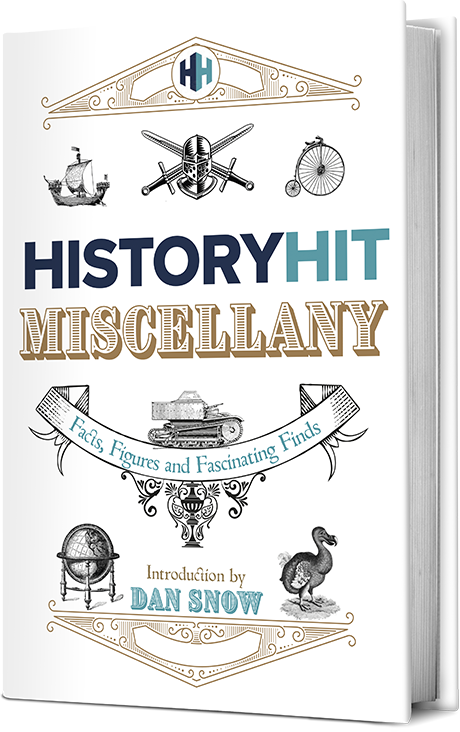
Camille Pissarro (1830-1903) was a Danish-French Impressionist painter who is regarded by many as the father of Impressionism. While known for his important contributions to Impressionism and Post-Impressionism, equally vital was his father-like standing amongst his fellow painters such as Cézanne, Seurat, Gauguin and van Gogh.
Born in the Caribbean, Pissarro lived in and painted a wide variety of places over the course of his life. Though his contributions to art were only first recognised towards the end of his life, today his legacy is both familial – the esteemed Pissarro family of painters are still active today – and international, with his art being both admired in galleries and studied academically.
Who was Camille Pissarro?
1. He was born in the Caribbean
Pissarro was born on 10 July 1830 to Frederick Abraham Gabriel Pissarro, a merchant, and Rachel Manzano-Pomié on the island of St Thomas (now in the US Virgin Islands, but then in the Danish West Indies).
When Pissarro was 12, his father sent him to the Savary Academy in Passy near Paris, where he first developed an appreciation of the French art masters.
2. He was determined to become an artist
When a 17-year-old Pissarro returned to St. Thomas, his father had him work in his business as a port clerk. When he turned 21, he met visiting painter Fritz Melbye and sailed with him to Venezuela in 1852, where, in Caracas, he drew landscapes, village scenes and sketches.

Jalais Hill, Pontoise is an Impressionist Oil on Canvas Painting created by Camille Pissarro in 1867
Image Credit: Image courtesy of 'Pissarro: Father of Impressionism' movie, released 24 May 2022
When he returned to St. Thomas in 1854, his parents realised their son was determined to be a painter. In 1855, Pissarro left for Paris.
3. He was critical of the art industry in Paris
In Paris, Pissarro worked as an assistant to Danish painter Anton Melbye. He also enrolled in classes taught by masters, but eventually found the latter ‘stifling’. As a result, he received tuition from Corot and started spending a lot of time painting ‘picturesque’ rural areas.
He became disillusioned with the Paris Salon – the annual exhibit of the city’s Académie des Beaux-Arts which was then hailed as the pinnacle of the Western art world. He would go on to successfully persuade others that it was unfair and elitist.
4. Soldiers destroyed all but a handful of his paintings
When the Franco-Prussian War broke out in 1870-1871, Pissarro was unable to join the army since he only had Danish nationality. He moved his family to a village close to London. He met Monet in London, where the pair were inspired by the works of British artists such as Constable and Turner.
When Pissarro returned to France after the war, he discovered that of the 1,500 paintings he had made over 20 years, only 40 remained, since the rest had been damaged or destroyed by soldiers who used them as floor mats outside to keep their boots clean.
5. He founded a collective of artists
In 1874, Pissarro founded an artists’ co-operative as an alternative to the Salon. The same year, the group held their first exhibition in Paris, which later became known as the first Impressionist show. Among those who showed their work were Monet, Renoir, Sisley, Cézanne, Degas and Morisot.

The pea stakers by Camille Pissarro, 1890
Image Credit: Image courtesy of 'Pissarro: Father of Impressionism' movie, released 24 May 2022
As a collective, the Impressionist artists wanted to record the modern world around them by capturing the changeable nature of light and colour. They focused on texture, tone and high-keyed colour above traditional compositions.
6. He was unsuccessful for much of his career
The initial public response to the first Impressionist exhibition was lukewarm, and Pissarro was deeply affected. He was also experiencing personal hardship at the time: his nine-year-old daughter Jeanne had died just a week before the exhibition opened.
Subsequent shows were no more popular, and by the time of the fourth group show in 1879, Renoir, Sisley and Cézanne had withdrawn, followed by Monet a year later. In spite of this, Pissarro remained adamant that he would not return to the Salon.
7. He became interested in Neo-Impressionism
In 1884, Pissarro moved to the hamlet of Eragny. There, he met young avant-garde artists Seurat and Signac, and became a convert to their Neo-Impressionistic style, which emphasised applying paint to the canvas in dots of contrasting pigments. However, he soon moved away from the Neo-Impressionistic style.
8. Six of his eight children became artists
In 1860, he started a relationship with his mother’s maid, Julie Vellay, who he married and had eight children with. Six became painters. Even today, the Pissarro family are heavily involved in the arts: for instance, Pissarro’s great-grandson Joachim Pissarro became Head Curator of Drawing and Painting at the Museum of Modern Art in New York City, while his great-granddaughter Lélia Pissarro has had her work exhibited alongside him.
9. By the end of his life, he was well-respected
Pissarro died on 13 November 1903, of sepsis. By the end of his life, he was beginning to gain critical recognition and praise, and over the course of the 20th century he was properly recognised as a key figure in Impressionism. He remains the only artist to have had his work exhibited at all eight Paris Impressionist exhibitions, and his contribution to the art world is immeasurable.

Woman Bathing Her Feet in a Brook by Camille Pissarro, 1894 – 1895
Image Credit: Image courtesy of 'Pissarro: Father of Impressionism' movie, released 24 May 2022
10. Many of his paintings were looted by the Nazis in the 1930s
In the 1930s, many Jewish owners of fine art masterpieces had their collections sold off or seized under the Nazi regime. Several of Pissarro’s paintings were sold to finance the Nazi war effort, sent to Hitler’s personal museum or traded by officials for personal gain. Many have still not been recovered by the original owners.
 Watch Now
Watch Now













